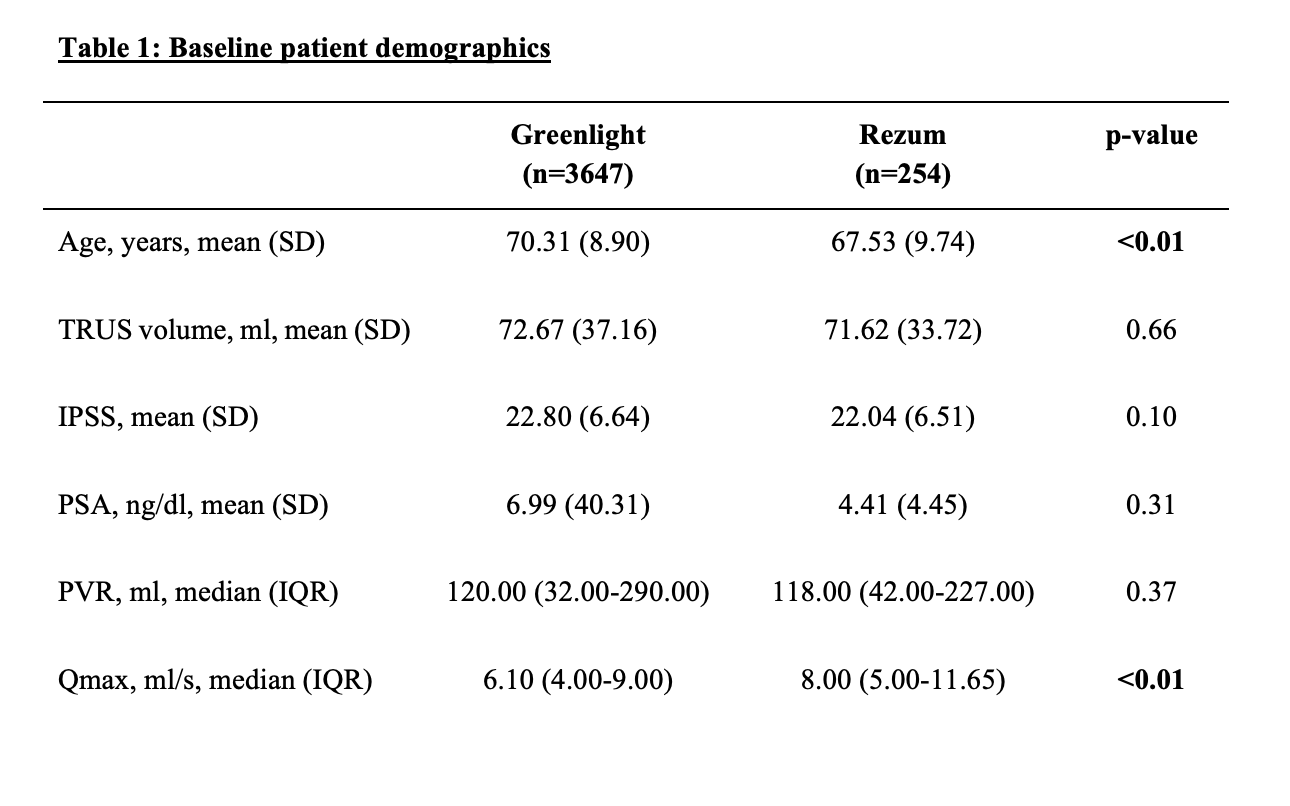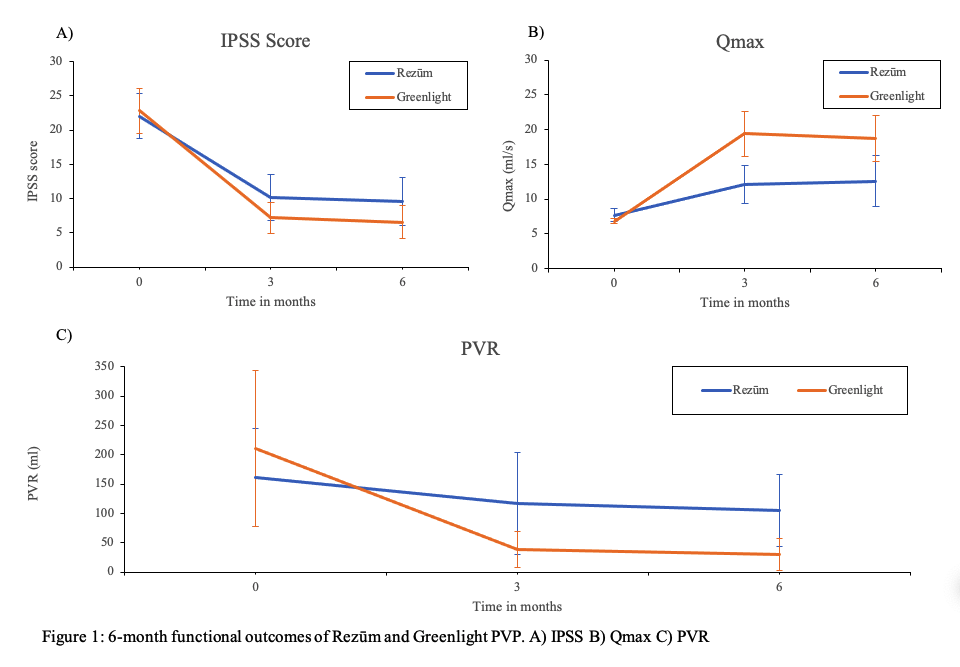Back
Poster, Podium & Video Sessions
Podium
PD45: Benign Prostatic Hyperplasia: Surgical Therapy & New Technology IV
PD45-01: Short-Term Postoperative Functional Outcomes of Rezūm vs. Greenlight PVP 180W XPS: A Propensity Match Score Study
Sunday, May 15, 2022
1:00 PM – 1:10 PM
Location: Room 252
Iman Sadri*, David-Dan Nguyen, Adel Arezki, Naeem Bhojani, Montreal, Canada, Bilal Chughtai, New York, NY, Dean Elterman, Toronto, Canada, Kevin C. Zorn, Montreal, Canada

Iman Sadri, MD
McGill University Faculty of Medicine
Podium Presenter(s)
Introduction: Rezum steam vapor therapy has recently gained popularity as a new minimally invasive surgical technique for patients with benign prostatic hyperplasia. The currently available literature on Rezum has been promising, showing good lower urinary tract symptom relief outcomes and favorable sexual outcomes. In this multicenter study, we sought to compare the postoperative functional outcomes of Rezum against a similar cohort of patients undergoing 180W XPS GreenLight PVP.
Methods: Data were obtained from the Global GreenLight Group database which includes 8 high-volume, experienced surgeons, from a total of 7 international centers, as well as data from the Canadian Rezum Database. Patients with previous BPH surgery were excluded. Six-month changes in IPSS, Qmax, and post-void residual (PVR) were compared between Greenlight and Rezum using regression models with inverse propensity treatment weighting adjusting for age and prostate size.
Results: The Greenlight PVP and Rezum groups have significant baseline differences in age and Qmax. At 6-month follow-up, Rezum demonstrated a PVR of 105ml compared to 30ml (p < 0.01) and an IPSS score of 9.5 compared to 6.6 (p < 0.01) in the Greenlight group. Most notably, compared to Rezum, regression models demonstrate that Greenlight PVP boasts statistically significant advantages in IPSS change from baseline [4.4 95%CI: 3.0-5.9, p<0.01], Qmax change from baseline [9.3ml/s 95%CI: 5.8-12.7, p<0.01], and PVR decrease from baseline [157ml 95%CI: 97-219, p<0.01] at 6-month follow up, respectively.
Conclusions: Rezum and Greenlight both demonstrated significant IPSS LUTS improvements as well as postoperative functional parameters when compared to baseline. The significant differences in postoperative outcomes between the observed technologies relates to the degree of tissue ablation with the trade off of reduced side effects, sexual dysfunction, procedure time, length of stay and cost. Such details should be discussed and evaluated during patient consultation and BPH procedure counselling.
Source of Funding: none


Methods: Data were obtained from the Global GreenLight Group database which includes 8 high-volume, experienced surgeons, from a total of 7 international centers, as well as data from the Canadian Rezum Database. Patients with previous BPH surgery were excluded. Six-month changes in IPSS, Qmax, and post-void residual (PVR) were compared between Greenlight and Rezum using regression models with inverse propensity treatment weighting adjusting for age and prostate size.
Results: The Greenlight PVP and Rezum groups have significant baseline differences in age and Qmax. At 6-month follow-up, Rezum demonstrated a PVR of 105ml compared to 30ml (p < 0.01) and an IPSS score of 9.5 compared to 6.6 (p < 0.01) in the Greenlight group. Most notably, compared to Rezum, regression models demonstrate that Greenlight PVP boasts statistically significant advantages in IPSS change from baseline [4.4 95%CI: 3.0-5.9, p<0.01], Qmax change from baseline [9.3ml/s 95%CI: 5.8-12.7, p<0.01], and PVR decrease from baseline [157ml 95%CI: 97-219, p<0.01] at 6-month follow up, respectively.
Conclusions: Rezum and Greenlight both demonstrated significant IPSS LUTS improvements as well as postoperative functional parameters when compared to baseline. The significant differences in postoperative outcomes between the observed technologies relates to the degree of tissue ablation with the trade off of reduced side effects, sexual dysfunction, procedure time, length of stay and cost. Such details should be discussed and evaluated during patient consultation and BPH procedure counselling.
Source of Funding: none



.jpg)
.jpg)